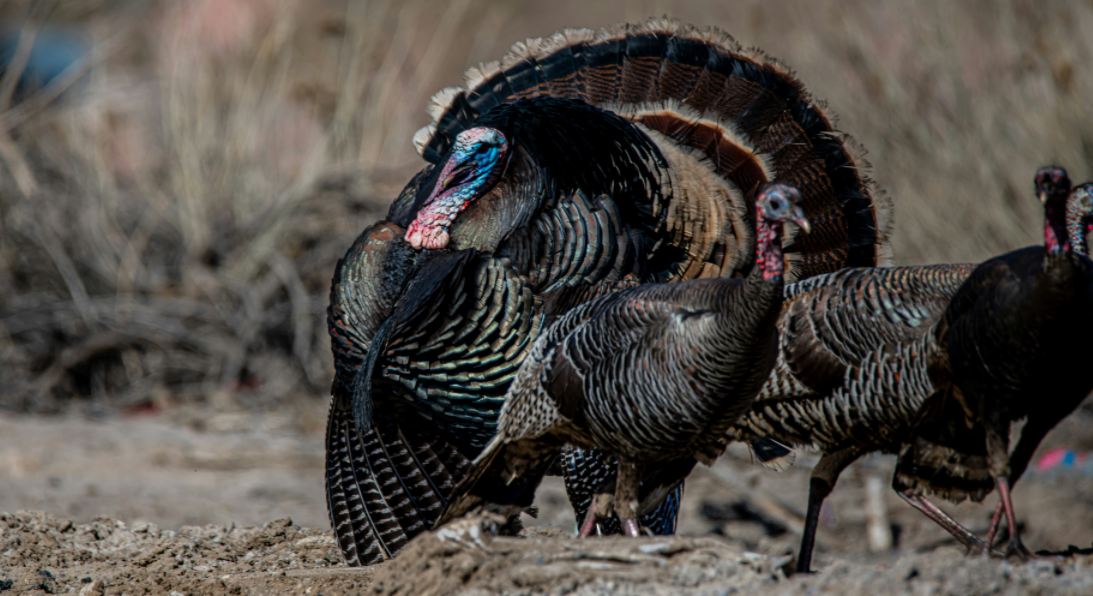Hunting a wild turkey can be one of the most rewarding experiences for outdoor enthusiasts, but what happens after the hunt is just as important as the chase itself. Knowing how to dress—or field dress—a wild turkey is an essential skill that every hunter should learn. Whether you’re a seasoned hunter or a beginner, mastering the art of dressing a turkey is crucial for preserving the meat and ensuring the quality of the harvest.
This guide will take you through the process step-by-step, offering tips and techniques to help you dress a wild turkey like a pro. By the end, you’ll be well-prepared to take care of your game in the field, ensuring that the meat you worked so hard to harvest remains as fresh and delicious as possible.
Step 1: Gather the Necessary Tools
Before you begin, it’s important to gather the right tools to make the process smooth and efficient. Here’s what you’ll need:
- Sharp Knife: A sharp boning knife or any sharp hunting knife will do. A sharp edge is essential for making clean cuts and avoiding unnecessary damage to the meat.
- Gloves: A pair of disposable or sturdy rubber gloves is recommended to keep things hygienic and prevent any bacteria from contaminating the meat.
- Game Bags: If you plan to transport the turkey back to camp or home, have a clean game bag on hand to store the dressed bird.
- Small Saw (optional): If you’re planning on keeping the legs or wish to process them separately, a small saw can be useful.
It’s also wise to bring a towel or cloth to wipe your hands during the process, as dressing a turkey can get messy.
Step 2: Prepare the Turkey
Before starting, position the turkey properly. If you’ve just taken the bird down, make sure it is well-secured and not still flopping around. Lay the turkey on its back with its head pointing toward you. Make sure you have enough space and a solid work surface.
To make the process more manageable, consider propping the bird’s wings up by tying them together using some string, or even using your belt to secure them to the body.
Step 3: Make the Initial Cut
The first cut is the most critical. Using your sharp knife, make a shallow incision at the vent, which is located around the turkey’s tail. Be careful not to cut too deep, as you don’t want to puncture any of the intestines or stomach. The cut should be just deep enough to expose the opening of the body cavity.
Once the vent is exposed, carefully make a small cut upward toward the ribcage. This incision should be just large enough to allow you to reach the internal organs. Take your time and avoid cutting too aggressively, as precision is key to keeping the meat intact.
Step 4: Remove the Internal Organs
Once you’ve made the cut, carefully reach into the cavity and begin to separate the internal organs from the walls of the body cavity. You can use your hands to gently pull them out. Start by removing the intestines, being cautious to avoid puncturing them, as that can cause the contents to spill and contaminate the meat.
Next, gently pull out the rest of the organs, including the liver and heart. The heart is edible and can be kept if you plan on cooking it. Some hunters also keep the liver, but be aware that it needs to be properly cleaned to avoid any bitterness.
Take extra care to remove all remnants of the organs, as any leftover pieces will spoil quickly and could affect the taste of the meat if left behind.
Step 5: Clean the Cavity
After the internal organs have been removed, it’s essential to clean out the turkey’s cavity thoroughly. Use your knife or fingers to scrape out any remaining tissue, blood, or membranes. A clean cavity helps to prevent contamination and allows for better storage of the meat.
At this stage, you might notice the turkey’s crop—a small pouch in the bird’s neck that stores food. Be careful not to puncture this pouch, as it may contain residual food material. If it’s still full, remove it carefully, as it can affect the meat’s quality.
Step 6: Prepare the Bird for Transport
Once the turkey has been fully dressed, it’s important to prepare it for transport. Gently rinse the cavity with clean water to remove any residual blood or debris. Pat the bird dry using a clean towel or cloth, paying attention to any areas that may have excess moisture.
If you plan on cooking the turkey immediately, you can place it in a cooler or on ice to keep it fresh. If you’re transporting it back to camp, a game bag or large plastic bag can help protect the meat from the elements. Be sure to keep the bird in a cool place to avoid spoiling the meat.
Step 7: Optional—Remove the Legs and Wings
While you can certainly leave the legs and wings attached, some hunters prefer to remove them to make transport easier or for specific recipes. To remove the legs, use your knife to cut through the joint where the leg meets the body. If you’re keeping the wings, the same process applies.
You can also choose to skin the bird if you wish, although many hunters prefer to pluck the feathers. Keep in mind that plucking a turkey can be time-consuming, and if you’re short on time or prefer a quicker method, skinning may be the better option.
Step 8: Store the Meat Properly
If you’re not planning to cook the turkey immediately, it’s essential to store the meat correctly. Wild turkey meat should be kept at a temperature below 40°F (4°C) and should be processed or cooked within a few days to prevent spoilage. For longer storage, consider freezing the meat after wrapping it tightly in plastic or butcher paper.
Conclusion
Dressing a wild turkey may seem daunting at first, but with a little practice, it becomes an essential skill for any hunter. By following these steps, you’ll ensure that your turkey meat is preserved safely and ready for cooking or storage. Whether you choose to roast, grill, or smoke your wild turkey, the effort you put into field dressing will pay off in the delicious meals that follow.
Remember, a clean and careful field dressing process results in better-tasting meat and a safer experience in the field. So, next time you harvest a wild turkey, use these tips to get the most out of your hunt. Happy hunting and good eating!


